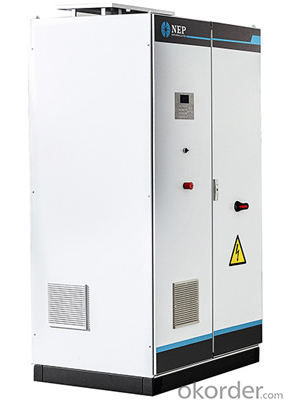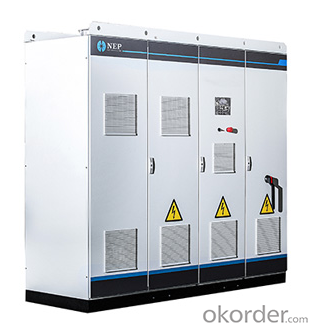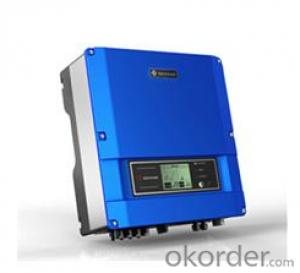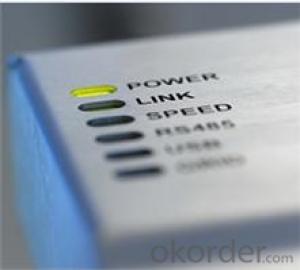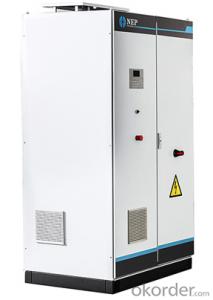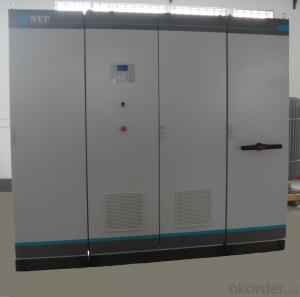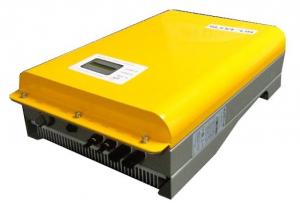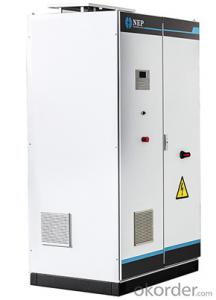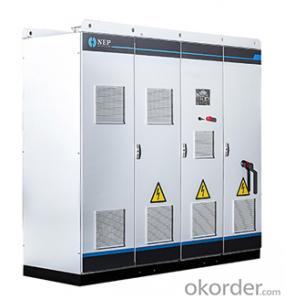Solar Inverter USA - Grid Tied Solar Inverter BDE-310K
- Loading Port:
- Qingdao
- Payment Terms:
- TT OR LC
- Min Order Qty:
- 10 unit
- Supply Capability:
- 1000 unit/month
OKorder Service Pledge
OKorder Financial Service
You Might Also Like
Description:
A solar micro-inverter, converts direct current (DC) electricity from a single solar panel to alternating current (AC). The electric power from several micro-inverters is combined and fed into an existing electrical grid. Micro-inverters contrast with conventional string or central inverter devices, which are connected to multiple solar panels.
Characteristic & Advantages:
More Energy Harvest: Distributed MPPT allows10~25% more energy harvest
Simple: Modularized,single ac cable to the house
Reliability: Longer life time and almost 100% operation hours
Security: No high Voltage, makes safter environments
Inteligent : Monitoring each module
Savings: No dc components and significantly save labor cost
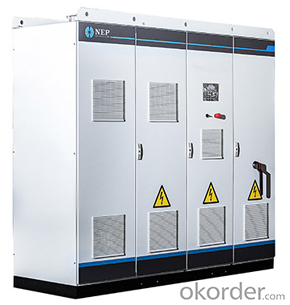
Datasheet:
| BDE-310K | |
(DC) | (kWp) | 340 |
(V) | 900 | |
(A) | 760 | |
MPPT | >99% | |
MPPT (V) | 450 - 820 | |
(AC) | (kW) | 310 |
(V) | 380/270 | |
(V) | 310-450/210-310 | |
(Hz) | 45.5—52.5 | |
THD | <3% ()< p=""> | |
| 0.92 () -- 0.92() | |
|
| 97.7% ()/ 98.6% () |
| 98.6%()/ 98.4% () | |
(W) | <10< p=""> | |
C (II) | ||
/ | ||
/ | ||
IP20 | ||
-35℃ -- +50℃ | ||
0-95% | ||
128*64 VFD | ||
RS485, RS232, , | ||
(-- mm) | 800*1800*2200 | |
(kg) | 1500/1060 | |
- Q: How does the harmonic distortion affect the performance of a solar inverter?
- Harmonic distortion can negatively impact the performance of a solar inverter. It can cause increased heat generation, reduced power quality, and can lead to premature failure of components. Additionally, harmonic distortion can interfere with other electrical devices connected to the inverter, causing disruptions and potential damage. Therefore, minimizing harmonic distortion is essential for maintaining optimal performance and efficiency of a solar inverter.
- Q: What is the role of a maximum power control feature in a solar inverter?
- The role of a maximum power control feature in a solar inverter is to optimize the energy output of the solar panels by constantly tracking and adjusting the operating point to ensure that the system operates at its maximum power point (MPP). This feature helps to increase the overall efficiency of the solar system and maximize the amount of energy that can be harvested from the sun.
- Q: What is the role of an isolation transformer in a solar inverter?
- The role of an isolation transformer in a solar inverter is to provide electrical isolation between the solar panels and the grid. It helps protect the solar panels and the inverter from electrical disturbances, such as voltage spikes or surges, that may occur in the grid. Additionally, the isolation transformer helps mitigate ground fault currents and provides a safety barrier between the grid and the solar system.
- Q: Can a solar inverter be upgraded or expanded in the future?
- Yes, a solar inverter can be upgraded or expanded in the future. Many solar inverters have modular designs that allow for easy upgrades or additions of additional components. This flexibility allows homeowners or businesses to increase the capacity of their solar system as their energy needs grow or new technologies become available. Upgrading or expanding a solar inverter can also help improve efficiency and performance, ensuring that the system stays up to date with the latest advancements in the industry.
- Q: How does a solar inverter convert DC to AC?
- A solar inverter converts direct current (DC) into alternating current (AC) by utilizing a two-step process. First, it converts the DC electricity generated by solar panels into a high-frequency AC waveform. This is done by using electronic components, such as transistors or power semiconductors, to switch the DC input on and off rapidly. Next, the high-frequency AC waveform is transformed into a stable and synchronized AC output that is suitable for use in home or commercial electrical systems. This is achieved through the use of filters, transformers, and other circuitry that adjust the voltage, frequency, and waveform of the AC output to match the requirements of the utility grid or the electrical load being powered. Overall, the solar inverter's key function is to efficiently convert the DC electricity produced by solar panels into a usable form of AC electricity that can be used to power appliances, machinery, and other electrical devices.
- Q: How does a solar inverter handle variations in AC load demand?
- A solar inverter handles variations in AC load demand by constantly monitoring the load and adjusting the output power accordingly. It uses advanced control algorithms to regulate the voltage and frequency of the AC output to match the specific requirements of the connected devices. This allows the inverter to effectively handle fluctuations in load demand and ensure a stable power supply.
- Q: Can a solar inverter be used in conjunction with a generator?
- Yes, a solar inverter can be used in conjunction with a generator. In fact, it is a common setup in hybrid systems where the solar panels generate electricity during the day, and the generator provides power during periods of low solar production or high energy demand. The solar inverter converts the DC power from the solar panels and the AC power from the generator into a usable form for the connected appliances and the grid. This combination allows for a more reliable and efficient power supply.
- Q: What is a solar inverter?
- A solar inverter is a device that converts the direct current (DC) electricity generated by solar panels into alternating current (AC) electricity that can be used to power household appliances and be fed back into the grid.
- Q: How much maintenance is required for a solar inverter?
- Solar inverters typically require very little maintenance. They are designed to be reliable and durable, requiring minimal attention throughout their lifespan. Regular visual inspections to check for any debris or dust accumulation, as well as ensuring proper ventilation, are recommended. Additionally, monitoring the inverter's performance through software or online platforms can help identify any potential issues. However, in general, solar inverters are known for their low maintenance requirements, making them a reliable choice for renewable energy systems.
- Q: How does a solar inverter handle voltage flicker in the grid?
- A solar inverter handles voltage flicker in the grid by continuously monitoring the grid voltage. When it detects a flicker, it adjusts its output power accordingly to stabilize the voltage and maintain a consistent power supply to the connected loads. This helps prevent disruptions and ensures a smooth operation of the grid.
Send your message to us
Solar Inverter USA - Grid Tied Solar Inverter BDE-310K
- Loading Port:
- Qingdao
- Payment Terms:
- TT OR LC
- Min Order Qty:
- 10 unit
- Supply Capability:
- 1000 unit/month
OKorder Service Pledge
OKorder Financial Service
Similar products
Hot products
Hot Searches
Related keywords


